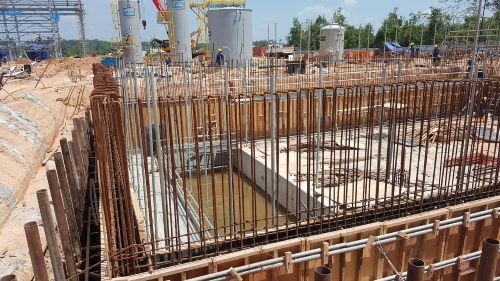

Engineering professionals in the United States increasingly take on a pivotal role as the demand for innovative and eco-friendly infrastructure grows. The need for sustainable and resilient solutions has never been greater. These projects must balance environmental responsibility with economic feasibility. Addressing these challenges requires expertise and a forward-thinking approach as engineers work to develop solutions that meet the unique environmental and regulatory needs of the U.S. while ensuring long-term sustainability and economic viability.
The answer lies in the work of US civil engineering consultants, who are driving sustainable development and transforming modern projects into long-lasting, resilient solutions. Their expertise allows for the creation of efficient, cost-effective, and environmentally friendly infrastructure. These consultants play a vital role in ensuring projects meet both current needs and future demands. Their contributions are essential to advancing the country’s infrastructure development.
The Growing Need for Sustainable Development
The global push for environmentally conscious projects is intensifying, and the construction industry is a significant player in this transition. Urban expansion, population growth, and environmental concerns fuel the demand for infrastructures that balance economic growth with ecological preservation. In the United States, the role of consultants in this field has become increasingly significant in achieving this balance.
Engineering consultants provide expertise in designing, planning, and implementing projects that meet current needs without compromising future generations. Their skills are essential in creating solutions supporting growing communities and minimizing environmental impact.
The Role of Civil Engineering Consultants in Sustainable Projects
In the context of driving eco-conscious projects, these experts focus on several key areas:
- Efficient Use of Resources: One of the primary goals of modern infrastructure projects is minimizing the use of natural resources. Skilled professionals are instrumental in designing structures that reduce energy consumption, promote water conservation, and limit waste production. By utilizing environmentally friendly materials and innovative designs, they help clients achieve long-term savings and lessen the overall environmental footprint of the project.
- Renewable Energy Integration: Energy efficiency is a cornerstone of sustainable infrastructure. Consultants in the United States often incorporate renewable energy solutions like solar panels or wind turbines into building designs and infrastructure systems. Their expertise in integrating these technologies ensures that projects meet current energy needs and align with future renewable energy goals.
- Green Building Standards: They ensure that projects adhere to green building certifications such as LEED (Leadership in Energy and Environmental Design). These certifications are increasingly sought after in the United States as businesses and municipalities seek to demonstrate their commitment to environmental responsibility. Civil engineers assist in meeting these certifications by incorporating energy-efficient HVAC systems, water-saving technologies, and eco-friendly materials into their designs.
- Reducing Environmental Impact: Reducing the environmental impact of infrastructure is a critical part of sustainable development. This can include minimizing disruption to natural habitats, preventing pollution during construction, and ensuring that developments are built in harmony with the surrounding environment.
Innovations in Sustainable Infrastructure Design
As technology evolves, consultants use new tools and methods to deliver advanced sustainable solutions. The application of cutting-edge technologies has revolutionized how infrastructure is designed and built. Some of the innovations influencing these projects include:
- Building Information Modeling (BIM): This technology enables the creation of 3D models of infrastructure projects, allowing for precise planning, real-time collaboration, and efficient use of resources. Consultants use Building Information Modeling (BIM) to enhance the accuracy of their designs, reduce construction errors, and optimize project timelines.
- Smart Cities: The rise of smart cities has brought a new wave of innovation, incorporating intelligent systems into urban infrastructure. Consultants are at the forefront of these developments, designing transportation networks, utilities, and public spaces that integrate technology to improve the quality of life while minimizing environmental impact.
- Sustainable Materials: New materials, such as recycled steel or concrete, have become essential in reducing the environmental footprint of construction projects. U.S. professionals advise using these materials to increase durability and lower emissions, ensuring that projects meet ecological standards without sacrificing structural integrity.
Challenges and Opportunities for Civil Engineering Consultants
While the shift toward sustainability offers tremendous opportunities, it also presents challenges. One significant challenge is balancing the need for environmentally responsible solutions with budget constraints. Green technologies and sustainable materials come with higher upfront costs, which can sometimes be a barrier to adoption. However, consultants in the United States play a crucial role in demonstrating the long-term financial benefits of eco-friendly infrastructure, such as reduced energy consumption and lower maintenance costs. US civil engineering consultants are at the heart of sustainable development efforts. Their expertise in creating efficient, eco-friendly infrastructure drives the future of construction and urban planning. As technology advances and environmental challenges intensify, the role of consultants in shaping sustainable infrastructure will only become more critical. Their ability to balance environmental responsibility with economic feasibility makes them indispensable partners in the journey toward a greener, more sustainable future.


